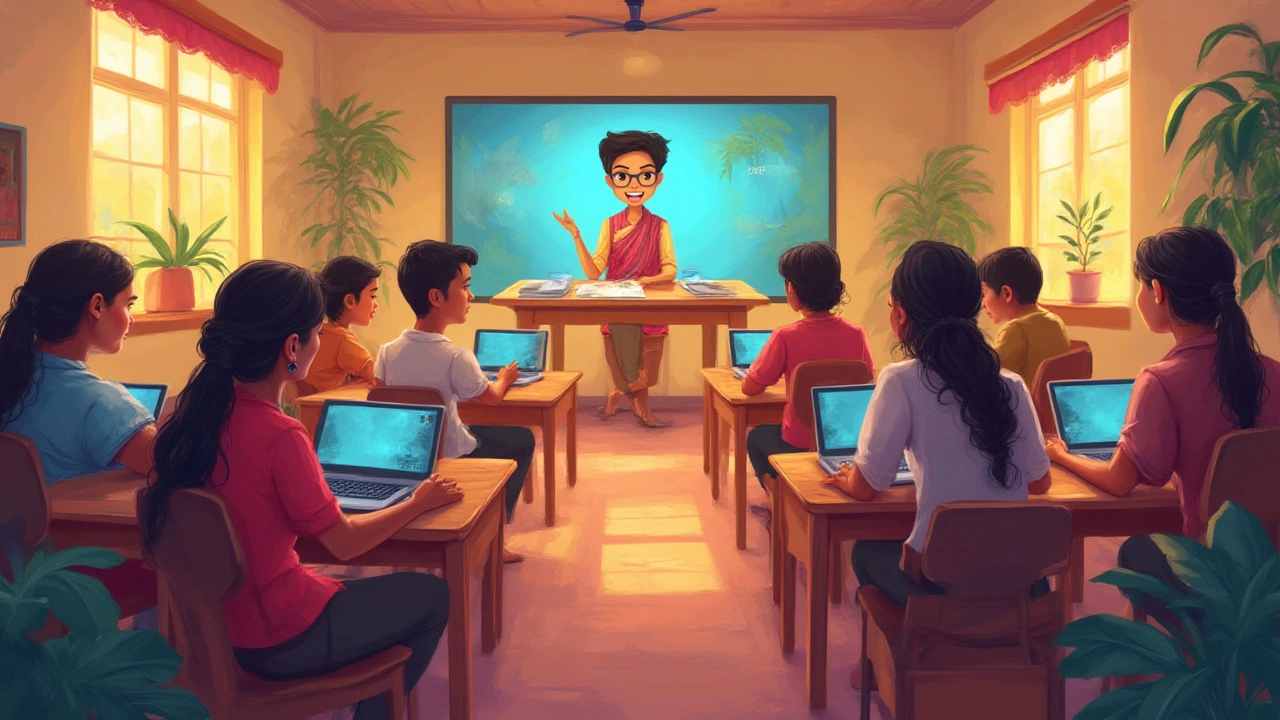Blended Learning: What It Is and How It’s Changing Education in India
When you think of blended learning, a mix of online digital instruction and face-to-face classroom teaching. Also known as hybrid learning, it’s no longer just a backup plan for pandemics—it’s becoming the new normal in Indian education. Schools and colleges are ditching the idea that learning only happens in a classroom with a chalkboard. Instead, they’re using apps, videos, quizzes, and discussion boards alongside regular lectures. This isn’t about replacing teachers—it’s about giving them better tools to reach students who learn differently.
Blended learning works because it gives students control. You can watch a video lesson at 10 PM if that’s when your mind clicks. You can pause, rewind, and rewatch until it makes sense. Meanwhile, in class, teachers focus on what machines can’t do: answering tough questions, guiding group projects, and spotting when a student is falling behind. It’s not magic—it’s just smarter scheduling. And it’s not just for cities. Even small-town colleges in Maharashtra and Uttar Pradesh are using WhatsApp groups, Google Classroom, and low-bandwidth apps to make learning stick.
But it’s not all smooth sailing. Many students still struggle with poor internet, shared phones, or no quiet space to study. Teachers aren’t always trained to design online content. And some parents still think if it’s not in a textbook, it’s not real learning. That’s why the best blended learning programs don’t just slap a video onto a syllabus—they redesign the whole experience. They ask: What can students do online? What needs a teacher’s presence? What’s just busywork?
Look at the posts below. You’ll find real examples of how blended learning connects to things like online learning platforms, digital tools used to deliver education outside the classroom, how digital education, the use of technology to support teaching and learning is changing exam prep for JEE and NEET, and why some students learn better with structured online modules than with long lectures. You’ll also see how platforms like Google Classroom are being used—and when they fall short. There’s no theory here. Just what’s working, what’s not, and what you can actually use.
Whether you’re a student trying to figure out the best way to study, a teacher looking to improve your lessons, or a parent wondering if this new system actually helps—what follows is a collection of real stories, data, and practical tips. No fluff. No jargon. Just what you need to know to make blended learning work for you.

The Three Main Types of eLearning Explained: Synchronous, Asynchronous & Blended Learning
Jul 5, 2025 / 0 Comments
Discover the three main types of eLearning—synchronous, asynchronous, and blended learning. Learn how each works, their pros and cons, and tips to maximize your success.
READ MORERECENT POSTS
- Best Programming Language for Beginners - Which Code Should You Learn First?
- How Long Does an MBA Degree Take? Complete Guide to Duration Options
- Which is the Most Competitive Exam?
- The Three Main Types of eLearning Explained: Synchronous, Asynchronous & Blended Learning
- What Is the Best Time to Prepare for NEET? Start Here for Maximum Results